What's New Under The Sun
Madison Historic Dial Returns
Monday, 13 October 2025 22:49
 On October 4, 2025 Madison Historical Society of Ohio was able to have their sundial returned after 32 years, when in 1993 it was moved to the lawn of Lake County Courthouse to reduce the chance of vandalism. The sundial was originally placed at Madison Home 100 years ago on Saturday, October 24, 1925 during a conference of the Women's Relief Society. From 1904 to 1962 the state ran this...
On October 4, 2025 Madison Historical Society of Ohio was able to have their sundial returned after 32 years, when in 1993 it was moved to the lawn of Lake County Courthouse to reduce the chance of vandalism. The sundial was originally placed at Madison Home 100 years ago on Saturday, October 24, 1925 during a conference of the Women's Relief Society. From 1904 to 1962 the state ran this...
Elements of Dialing Course - 2025
Monday, 15 September 2025 19:42
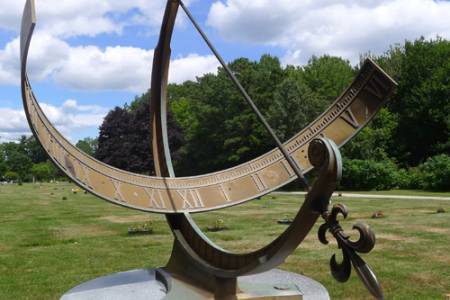 NASS is pleased to announce the upcoming fifth instance of Elements of Dialing, our introductory course about sundials, their history, and the science that makes them work. The free 12-lesson course, intended for those are new to sundialing, runs from 27 October 2025 until 26 April 2026. The course instructor is Robert Kellogg, NASS Vice President and Sundial Registrar. Bob will be...
NASS is pleased to announce the upcoming fifth instance of Elements of Dialing, our introductory course about sundials, their history, and the science that makes them work. The free 12-lesson course, intended for those are new to sundialing, runs from 27 October 2025 until 26 April 2026. The course instructor is Robert Kellogg, NASS Vice President and Sundial Registrar. Bob will be...
Sun Queen of World War II
Thursday, 11 September 2025 23:11
 A Hungarian born American scientist, Mária Telkes (1900-1995), was called "The Sun Queen" and among other honors, was postmousthly inducted into the National Inventors Hall of Fame. She lived to 95 and for most of her life developed solar power in a variety of forms.
Trained as a biophysicist, she worked for Westinghouse Electrical and Manufacturing Company in Pittsburgh, PA, where she...
A Hungarian born American scientist, Mária Telkes (1900-1995), was called "The Sun Queen" and among other honors, was postmousthly inducted into the National Inventors Hall of Fame. She lived to 95 and for most of her life developed solar power in a variety of forms.
Trained as a biophysicist, she worked for Westinghouse Electrical and Manufacturing Company in Pittsburgh, PA, where she...
2025 Conference -Ottawa
Thursday, 28 August 2025 23:25
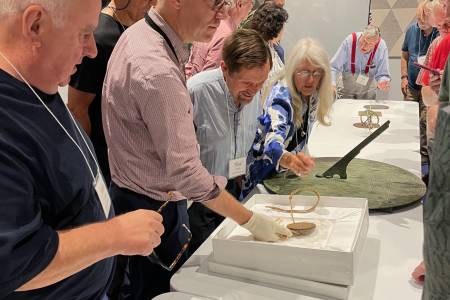 The annual NASS Conference was held 7-10 August, 2025 in Ottawa. As usual, the conference began late Thursday afternoon with an introduction social and a "grab bag give away", taking your chances with tickets to win the bag's prize. Will Grant was the final winner of the Walton Double Planar Polar Sundial, but Paul Ulbrich beat the statistic odds and won this prize three times,...
The annual NASS Conference was held 7-10 August, 2025 in Ottawa. As usual, the conference began late Thursday afternoon with an introduction social and a "grab bag give away", taking your chances with tickets to win the bag's prize. Will Grant was the final winner of the Walton Double Planar Polar Sundial, but Paul Ulbrich beat the statistic odds and won this prize three times,...
Prosciutto di Portici Sundial's Owner
Tuesday, 10 June 2025 18:51
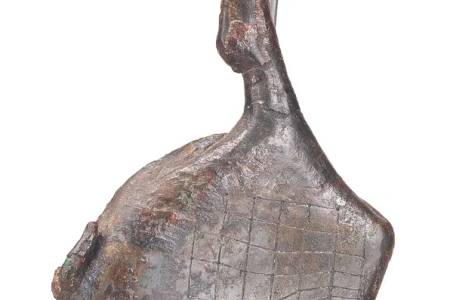 Prosciutto di Portici (Ham) Sundial
Photo: Getty Images
The Prosciutto di Portici Sundial, more often called the Portici Ham Sundial, dates from the first century somewhere between 8 BCE to 79 CE. This small silvered bronze dial was uncovered on 11 June, 1755 in the ruins of Herculaneum (current day Portici) in the "Villa of the Papyri", buried in...
Prosciutto di Portici (Ham) Sundial
Photo: Getty Images
The Prosciutto di Portici Sundial, more often called the Portici Ham Sundial, dates from the first century somewhere between 8 BCE to 79 CE. This small silvered bronze dial was uncovered on 11 June, 1755 in the ruins of Herculaneum (current day Portici) in the "Villa of the Papyri", buried in...
Hamilton Dial Dedicated
Friday, 06 June 2025 21:01
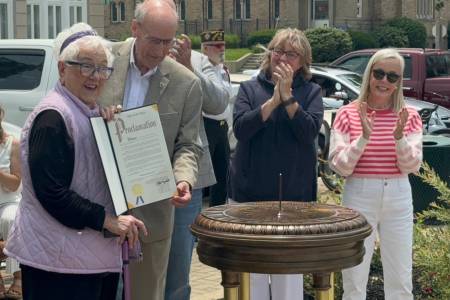 Sundial dedication May 31, 2025. At left is Kathleen Stuckey Fox, with the City Proclamation presented by Mayor Pat Moeller and City Council on-lookers Carla Fiehrer and Susan Vaughn offering congratulations.
On May 31, 2025 at 1pm, the Hamilton, Ohio, sundial (NASS Sundial Registry #1109) was re-dedicated in Monument Park. Originally dedicated in 1941 to the...
Sundial dedication May 31, 2025. At left is Kathleen Stuckey Fox, with the City Proclamation presented by Mayor Pat Moeller and City Council on-lookers Carla Fiehrer and Susan Vaughn offering congratulations.
On May 31, 2025 at 1pm, the Hamilton, Ohio, sundial (NASS Sundial Registry #1109) was re-dedicated in Monument Park. Originally dedicated in 1941 to the...
Frans Maes Received a Royal Decoration
Monday, 24 March 2025 21:33
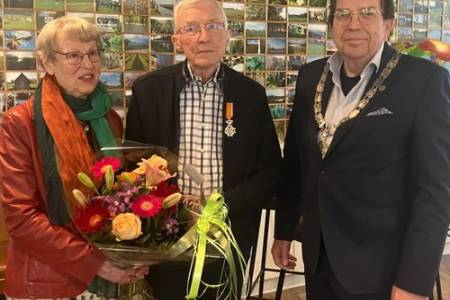 Several years ago Frans decided to write the course on sundials that included self assessment questions to force students not only to read the text, but to internalize the concepts. And a final submittal question "not necessarily a difficult question, but: no answer, no new lesson." Thus Frans Maes began writing lessons and sending them out to students.
NASS has now used his material to create...
Several years ago Frans decided to write the course on sundials that included self assessment questions to force students not only to read the text, but to internalize the concepts. And a final submittal question "not necessarily a difficult question, but: no answer, no new lesson." Thus Frans Maes began writing lessons and sending them out to students.
NASS has now used his material to create...
Pros and Cons of Daylight Savings Time
Monday, 24 March 2025 15:37
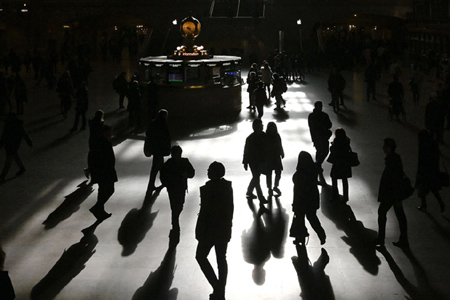 In a 24 March 2025 article from the on-line Science Advisor (American Association for the Advancement of Science) Phie Jacobs summarizes the "great debate" of the yearly shift from standard time to daylight savings time. In January 2025 the US Senate introduced the Sunshine Protection Act to permanently have daylight savings time year round. Certainly 54% of Americans do not like the...
In a 24 March 2025 article from the on-line Science Advisor (American Association for the Advancement of Science) Phie Jacobs summarizes the "great debate" of the yearly shift from standard time to daylight savings time. In January 2025 the US Senate introduced the Sunshine Protection Act to permanently have daylight savings time year round. Certainly 54% of Americans do not like the...
Native American Moon Alignment Ring
Friday, 21 March 2025 19:26
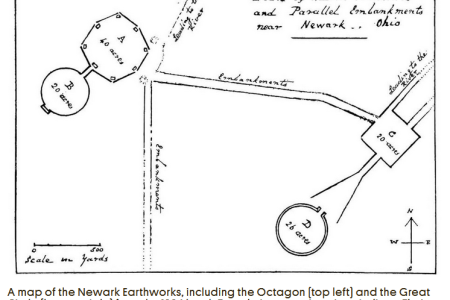 Perhaps the most famous alignment circle in the United States is the Cahokia Woodhenge near St. Louis constructed between 700-1400 CE by Cahokia Indigenous native Americans. But there were an estimated 10,000 other earthen mounds that once were scatter across the mid-west..
In an article from Atlas Obscura (https://www.atlasobscura.com/articles/octagon-earthworks-ohio) by Olivia Young on March...
Perhaps the most famous alignment circle in the United States is the Cahokia Woodhenge near St. Louis constructed between 700-1400 CE by Cahokia Indigenous native Americans. But there were an estimated 10,000 other earthen mounds that once were scatter across the mid-west..
In an article from Atlas Obscura (https://www.atlasobscura.com/articles/octagon-earthworks-ohio) by Olivia Young on March...
Hamilton Dial under Restoration
Friday, 21 March 2025 18:37
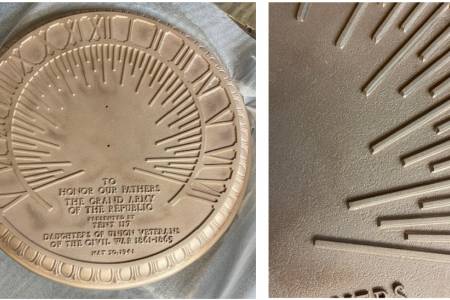 The Hamilton dial is in the restorative care of Jarrett and Celene Hawkins (Hawkins & Hawkins Custom, LLC in Cincinnati Ohio https://www.studio-hawkins.com/) in preparation for the dial's dedication on Saturday, May 31, 2025.
The face of the Hamilton Grand Army of the Republic (GAR) sundial has been cleaned and bead-blasted showing the dial as it was cast 84 years ago. In the process,...
The Hamilton dial is in the restorative care of Jarrett and Celene Hawkins (Hawkins & Hawkins Custom, LLC in Cincinnati Ohio https://www.studio-hawkins.com/) in preparation for the dial's dedication on Saturday, May 31, 2025.
The face of the Hamilton Grand Army of the Republic (GAR) sundial has been cleaned and bead-blasted showing the dial as it was cast 84 years ago. In the process,...
VSSC Space Museum gets Polar Sundial
Tuesday, 17 December 2024 23:47
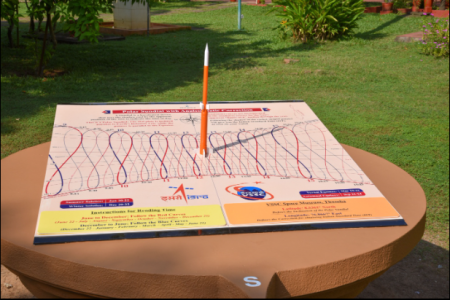 In November 2024, a team consisting of members from SPL, TTDG and CMD of VSSC successfully designed and installed an accurate and fully functional sundial at the Rocket Garden of VSSC Space Museum, Thumba (8.53°N, 76.86°E). Following a space theme, the vertical gnomon is a 3-stage rocket that casts its daily and seasonal shadow on a dial face 1 1/2 meters by 1 meter. The the sundial face...
In November 2024, a team consisting of members from SPL, TTDG and CMD of VSSC successfully designed and installed an accurate and fully functional sundial at the Rocket Garden of VSSC Space Museum, Thumba (8.53°N, 76.86°E). Following a space theme, the vertical gnomon is a 3-stage rocket that casts its daily and seasonal shadow on a dial face 1 1/2 meters by 1 meter. The the sundial face...
Historic Sundials of Andalusia
Saturday, 16 November 2024 00:07
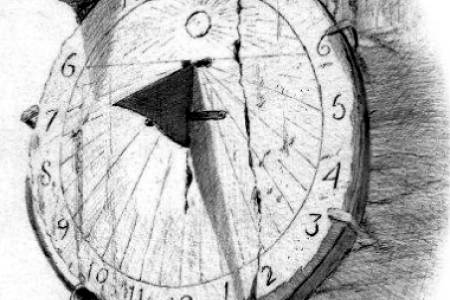 Esteban Martínez Almirón has published a new book Historical Sundials: Forgotten Andalusian Treasures (Relojes de Sol Históricos Tesoros Andaluces Olvidados) In it he reviews over 400 sundials from the Andalucian region of southern Spain Originally to celebrate the 25th year of the website https://relojandalusi.org/
Esteban Martínez Almirón began showing his sundial drawings on the site....
Esteban Martínez Almirón has published a new book Historical Sundials: Forgotten Andalusian Treasures (Relojes de Sol Históricos Tesoros Andaluces Olvidados) In it he reviews over 400 sundials from the Andalucian region of southern Spain Originally to celebrate the 25th year of the website https://relojandalusi.org/
Esteban Martínez Almirón began showing his sundial drawings on the site....
Barnwell Sundial Stands Test of Time
- Details
- Hits: 11785
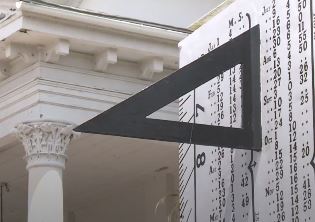 In this age of smartphones and digital wrist watches, the Barnwell Sundial in front of the Court House in Barnwell, South Carolina continues to tell accurate time. As reported by the television stations WRDW and WAGT, "It was put up in 1858 after it was given to the county by state senator Joseph D. Allen. The sundial keeps very accurate standard time, even though that wasn't established until 1884. [Telling standard time is possible through Equation of Time corrections listed on the face of the dial.] The courthouse that is located near it burnt down in 1865, but the sundial stood tall. In 1918, still in it's original location, a concrete curbing was built around the sundial to protect it from traffic. Over the years, it was restored and fixed up."
In this age of smartphones and digital wrist watches, the Barnwell Sundial in front of the Court House in Barnwell, South Carolina continues to tell accurate time. As reported by the television stations WRDW and WAGT, "It was put up in 1858 after it was given to the county by state senator Joseph D. Allen. The sundial keeps very accurate standard time, even though that wasn't established until 1884. [Telling standard time is possible through Equation of Time corrections listed on the face of the dial.] The courthouse that is located near it burnt down in 1865, but the sundial stood tall. In 1918, still in it's original location, a concrete curbing was built around the sundial to protect it from traffic. Over the years, it was restored and fixed up."
See the video of Phill Huggins tell about how he got the opportunity to restore the sundial.
http://www.wrdw.com/content/news/Unique-Barnwell-sundial-stands-the-test-of-time-484160371.html
Bobby Jones Sundial - Slow Time
- Details
- Hits: 13996
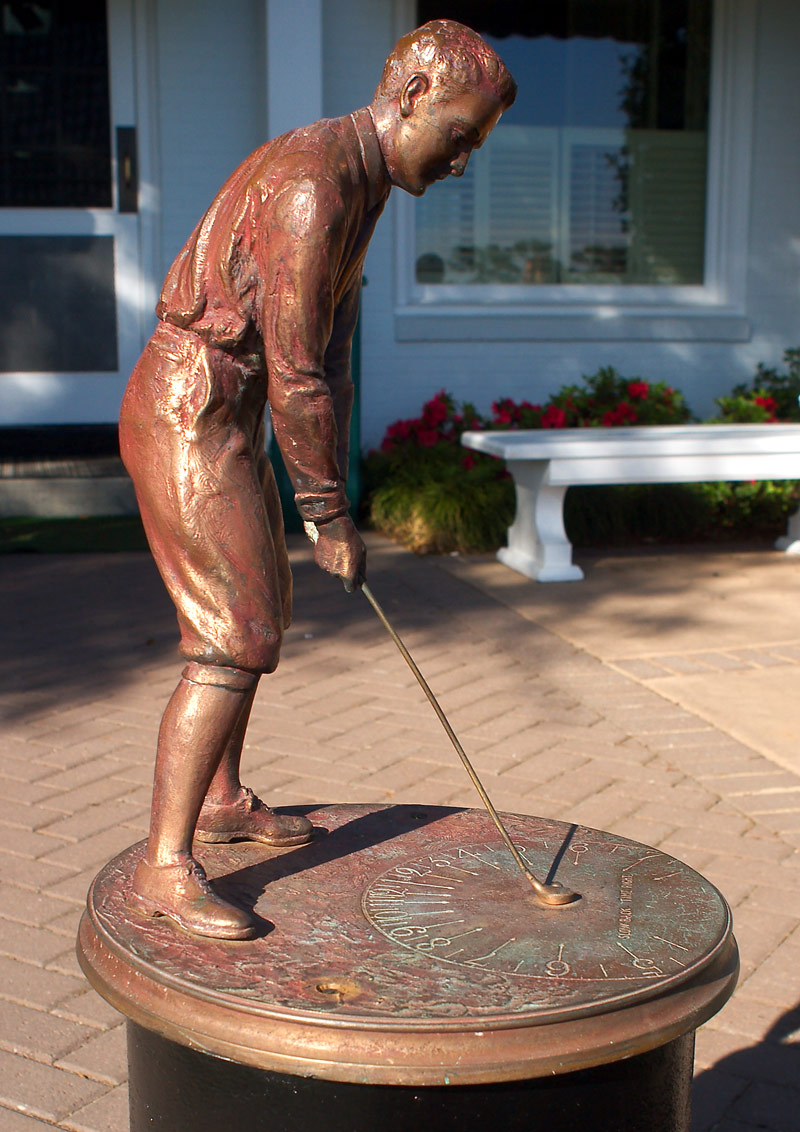 With the Masters Tournament playing in Augusta and the return of Tiger Woods, many golf enthusiasts think back to other great players. One of the greatest was Bobby Jones. John Steinbreder writes about a sundial in his honor, "Another reminder of Jones here [at the Augusta National Golf Club] is a small bronze statue just 18 1/2 inches in height that is part of a working sundial outside the Member Golf Shop and just across from the first tee. The effigy boasts a rich, brown patina and etched across the lower part of the sundial are the words: 'Slow Back, Time Right.'
With the Masters Tournament playing in Augusta and the return of Tiger Woods, many golf enthusiasts think back to other great players. One of the greatest was Bobby Jones. John Steinbreder writes about a sundial in his honor, "Another reminder of Jones here [at the Augusta National Golf Club] is a small bronze statue just 18 1/2 inches in height that is part of a working sundial outside the Member Golf Shop and just across from the first tee. The effigy boasts a rich, brown patina and etched across the lower part of the sundial are the words: 'Slow Back, Time Right.'
Back in the 60's Pete Pascale found the statue and dial in a scrap metal dumping ground in Erie, Pensylvannia. After cleaning and repairing the statue, he gave it to Rick and Hank DeDionisio who ran Ricardo's Restaurant in Erie. The brothers were avid golfers and in turn presented the figure and dial to their Downing Golf Club. As Steinbreder writes,"...the brothers and club hit upon the idea of offering the statue to Augusta National, because of their admiration of Jones. They asked John May, a senior editor at Golf Digest, to act as an intermediary, and the journalist contacted Roberts in a letter dated May 18, 1972. Some time later, the Sundial took its place outside the Member Golf Shop."
Read about August National and the Sundial at: http://www.goerie.com/sports/20180406/erie-residents-helped-iconic-sundial-reach-augusta-national
It is believed that Edwin E. Codman, the English artist crafted the piece in the 1930s, using Jones as the model for the figure. Codman spent the early part of his life in England working at the Gorham foundry, creating small exquisite bronze sculptures. In 1931 he moved to Dorset, Vermont where he and his wife lived quietly until his death in 1955. Looking at history, Bobby Jones won fame between 1923 to 1930, culminating with the Grand Slam that included the British Amateur and British Open. It is very plausible that Codman made the sculpture and sundial in 1930 to recognize the fame of this retiring golfer.
The real story behind the Bobby Jones sundial is ultimately instructive for the world of golf: In Augusta, it doesn't tell correct time, even solar time. If Codman made the sundial in the UK, it explains the angle of the golf club shaft, closer to the latitude angle of London at 51 degrees rather than 42 (Erie, PA) and certainly not 36 degrees (Augusta, GA). This may be confirmed by the face of the dial, where the hours span from 4am to 8pm, allowing for the variation of sunlight in England, not Georgia.
So the joke is on all those golfers who look to the Bobby Jones sundial, as the only time telling device on the course: it has never told correct time (except for noon) in Augusta and never will. It would be fun to get a rubbing of the dial face to prove it runs on London time.
Gnomonic Tales of Our Founding Fathers
- Details
- Hits: 9464

Did you know that Thomas Jefferson designed sundials and thought that a book of trigonometric tables was one of his most valuable books? And that Benjamin Franklin made a "modest" proposal for an extension of the noon-day sundial canon? Join Fred Sawyer, eminent sundialist and president of the North American Sundial Society as he explores sundial history with the United States founding fathers George Washington, Benjamin Franklin and Thomas Jefferson in three video presentations. The videos are taken from a presentation he made two years ago at the annual meeting of the NASS in Indianapolis. See these videos at: http://www.sundials.org/index.php/dial-links/videos/historic-sundials
Learn more about sundials, their construction and their history by joining the North American Sundial Society. Go to http://www.sundials.org/index.php/join-nass/join-nass and join now.
Historic Ingleside Sundial
- Details
- Hits: 13122
In 2000 the North American Sundial Society held its annual conference in San Francisco and visited the Ingleside Terraces Sundial. A century ago the site was a racetrack and as it turned into a housing development in 1913, a promotion sundial was installed with the advertisement "largest sundial in the world". Michael Callahan of "This Forgotten Day in San Francisco" talks about this historic dial and the developer Joseph A. Leonard of Urban Reality Improvement Company on November 15, 1913.
Auction of Rare Foster Manuscript
- Details
- Hits: 13003
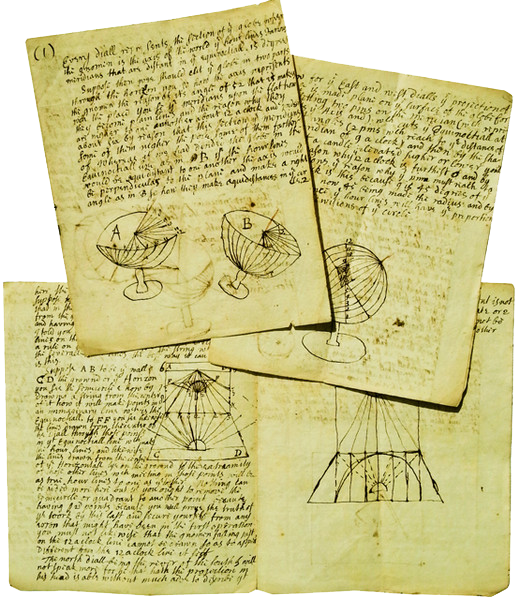
|
In 1636 or 1637 Samuel Foster, a distinguished Professor of astronomy at Gresham College produced a manuscript that describes the construction and use of an analemmatic sundial, a vertical sundial, and a declining sundial.
The collection of 12 pages on four double leafs each measure 15 x 18 cm. This manuscript relates to Samuel Foster's most important invention, a computational device known as a dialling scale, and precedes the publication of his second and most significant book in 1638 "The Art of Dialling: by a New, Easie, and Most Speedy Way ..."
Founding Fathers
- Details
- Hits: 12084

Thomas Jefferson
by Rembrandt Peale-1800
White House Historical Association
|
Fred Sawyer, President of the North American Sundial Society and editor of the Compendium sundial journal will present a lecture on "Gnomonic Tales of Thomas Jefferson (and other Founding Fathers)" on Thursday evening, April 10th at 7pm at the Great Falls Library, VA. Reservations are required. Contact the Fairfax County Libraries for more information.
The lecture will consider sundials in the lives of Thomas Jefferson and other prominent figures of early America such as George Washington and Benjamin Franklin. Rather than serving simply as timekeeping devices, sundials will be seen as academic exercises, inspirations for poetry, symbols of an industrious new country, invitations to relaxation, and opportunities for invention.
Antique Sundial Treasures
- Details
- Hits: 13813
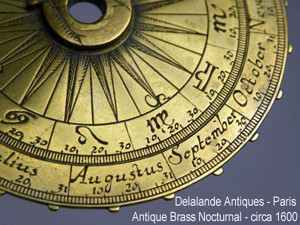
Gallerie Delalande, Louvre de Antiquaires, Paris
|
The Galerie Delalande, Louvre des Antiquaires in Paris is presenting an exhibition of 150 Pocket and Table Sundials. The exhibit will continue until January 19th, 2014. The gallery is now offering a book "Cadrans solaires / Sundials", written in French and English to illustrate these sundials:. http://www.delalande-antiques.com/exhibition-sundials-paris/book-sundials.html
The Louvre des Antiquaires opened in 1978 and has a beautiful collection of astrolabes and nocturnals, globes and armillary spheres, octants, sundials and equinoctial rings and much more. You can find photos of many of these dials following the link http://www.delalande-antiques.com/marine-sciences/
Building Gone - Dial Lives On
- Details
- Hits: 14834
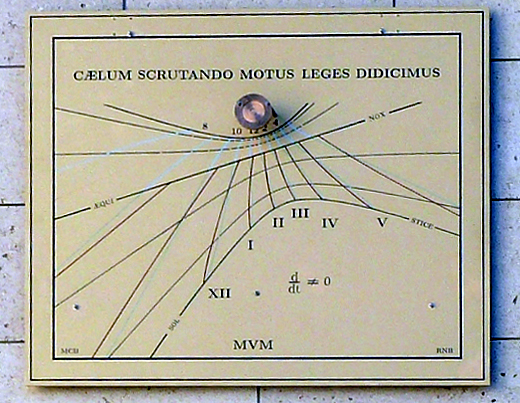 [photo courtesy of Kathleen Gust, Terman Engineering Library, Stanford Univ]
|
In 1995 Professor Emeritus Bracewell designed a vertical declining dial for the south face of the Terman Engineering Building at his Stanford University home campus in Palo Alto. But the building was torn down in 2011 and by March 2012 nothing but landscaping of the new Terman Park remained. Fortunately Prof. Ronald Bracewell’s sundial once again casts its solar time on the south wall of the Stanford Jen-Hsun Huang Engineering Center. Both the Huang and old Terman building have similar south-south-west alignments allowing the dial to be remounted without adjustment. [http://library.stanford.edu/blogs/stanford-libraries-blog/2013/04/sundial-returns-engineering-center].
Historic Replica Dial for Holland College
- Details
- Hits: 13347
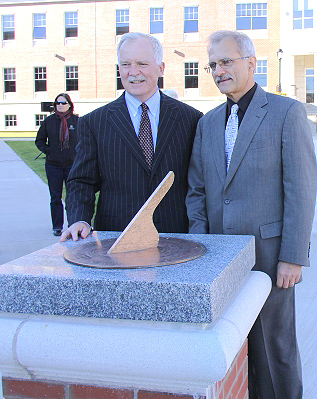
[Photo courtesy of Holland College]
|
In 2009 Holland College on Prince Edward Island began a major $17M renovation and expansion program, including a large open-space quadrangle. Vice President Michael O'Grady was commissioned Tony Moss of Lindisfarne Sundials [now retired] to make a replica sundial Captain Samuel Holland had given to Dartmouth College, New Hampshire in 1773. Tony undertook the work to create a copy of the dial, redeclinating it to the new site in Charlottetown in Prince Edward Island with the proviso that he "might replace the original ... chapter ring scrolls with some of my own design." Tony further commented, "I think the engraver was indulging an apprentice with the less-critical parts of the job..."
Site Search
Sundial Question?
Current Sun
Civil = Sundial + EoT + dLon
where dLon is (4xNr Degrees W. of Time Zone
Select Sundials by State/Province
Who's Online
We have 713 guests and no members online
